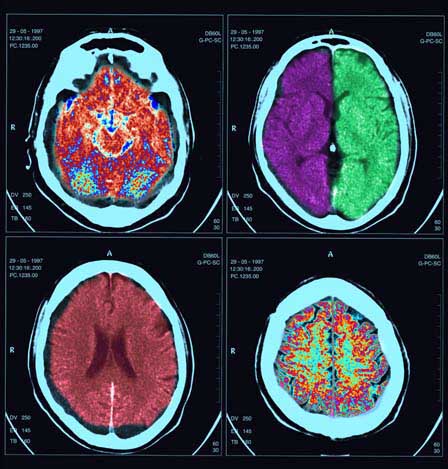Brain Fingerprinting: Detecting Hidden Thoughts
The fundamental difference between an innocent person and a guilty person is that a guilty person has committed the crime, so the record is stored in his brain. Now we have a way to measure that scientifically.
For more than a decade, Dr. Farwell has been developing his brain fingerprinting technology since getting his Ph.D. In biological psychology from the University of Illinois.
Brain fingerprinting-- what is it, Dr. Farwell?
Brain fingerprinting is a scientific technique for determining whether certain information is stored in the brain or not by measuring brain waves, electrical brain activity.
Farwell says that when the human brain recognizes important information, it triggers a specific electrical signal called a murmur that can be measured and analyzed.
When you recognize something, there's certain information processing that takes place in the brain at the moment of recognition. And that's the information that we pick up.
And since our brains keep a detailed record of everything significant that we do, Dr. Farwell believes police could use his technology to determine whether a suspect has some hidden knowledge about a crime. Here's how it works.
The suspect, like this man about whom you'll hear a good deal more later, sits in front of a computer wearing a headband equipped with special sensors. Words and pictures flash briefly on the screen. Some of those words and pictures are relevant to the crime-- say, for example, the name or the photograph of the victim, or a photo of the murder weapon.
If he committed the crime, then his brain says, aha, I recognize that. We get a brain wave response indicating recognition. We get a murmur. And that way we can tell that this is the person who committed the crime.
What if a fellow was a witness to a crime and he saw all of these things happen, saw them happen, but he was not the criminal?
Well, then we would not be able to apply this technology. It's the same as if, for example, someone might be present at a crime scene and leave his fingerprints there, but because he was there for some other purpose.
To determine where Harrington actually was on the night of the murder 23 years ago, Farwell tested him on specific details about his alibi and about the crime.
Kevin Hughes testified at the trial, and Harrington heard this, that he saw Harrington and another perpetrator running out from behind a building. Now I asked Harrington, do you know what was behind that building? He said no. So you don't know what's behind there? He said, no, I have no idea what's behind there.
Behind that building was a field which was overgrown with grass and weeds that were about waist-high. After the shooting, police say that Harrington ran across that field to get to his car.
At 3 o'clock in the morning, getting away from a crime scene, if you're being impeded by waist-high weeds and grass, it's something you would notice.
So on Harrington's test, the phrase "weeds and grass" flashed repeatedly on the screen, as did phrases describing other details of the crime which, if Harrington recognized them, says Dr. Farwell, would prove that he killed John Schweer.
The brain never lies. If that information is stored in the brain, when that comes up on the screen, he'll recognize it, whether he's an honest person or not. Whether he wants to or not.
What were the actual results of Harrington's brain fingerprinting test?
The result was that we can determine with a 99.99% confidence that the information relevant to the crime was not stored in Harrington's brain, and with that same level of confidence, that the information regarding his alibi was stored in his brain.
Do you believe that Terry Harrington is innocent?
My professional opinion is that Harrington did not commit that crime.
To find out what other scientists think of Dr. Farwell's technology, we talked to Dr. William Iacono at the University of Minnesota. Dr. Iacono is a professor of psychology and neuroscience, and he's considered a leading expert in the field of psychophysiology.
Of course, a lot of folks are skeptical that just flashing a word or a couple of words, or pictures, are going to determine a person's innocence or guilt.
It's natural to be skeptical, but the fact is that the basic procedure that Dr. Farwell is using is supported by literally hundreds of studies that show that our brain produces a response like this. And he's done research in this area, I've done research in this area, that shows that people do in fact recognize this kind of information.
So what you're saying is that brain fingerprinting actually works.
There's a solid scientific basis for it, yes.
But while Dr. Iacono says Farwell's tests on Harrington are compelling, he will not say they proved Harrington is innocent. That decision, he says, is up to a jury.

